Blog entries have been a little lean since my 30 day burst of fishing from late August through much of September. I simply fell behind in my work and also my parents are out visiting. They are from New Hampshire and this is their first visit in about two years. My dad loves to fly fish but unfortunately he suffers badly from Parkinson’s. Although we are trying to do some fishing together he’s not often able too. This past weekend Granny and I led them to Yellowstone Park to try and find some bears and hopefully wet a line with dad.
Granny and I have two favorite times to be in Yellowstone Park – early in the spring and late in the fall. If you’ve been to Yellowstone but not at these times, do it. Both are times when there are few human visitors and plenty of wildlife. On our spring trip the landscape is barren and most areas are covered in snow. There are animal babies everywhere and you can spend your whole day looking through your binoculars and never get bored. That’s good because in early May the fishing season has yet to open. In the fall all the aspens and cottonwoods are shedding their leaves. Rather than snow, the ground is covered in leaves of every color. The grasses are brown and the animals are feeding with winter on their minds. And unlike in spring when you can’t fish, fall fishing in Yellowstone can be incredible.
At 5 PM we found ourselves descending down Dunraven Pass when about a ½ mile below the road I spotted a grizzly bear moving fast across a meadow. We pulled over and watched him with binoculars for about ten minutes. He was a large bear on a mission and eventually he disappeared into some trees along Antelope Creek. The road we were on actually meets Antelope Creek about two miles further down it so I drove us to that spot and we pulled off there and waited about a half hour hoping the very same bear may show up. Sure enough he did and we got to watch him pass our cars from very close. Seeing a wild grizzly this close is a rare thing. This was a big bear of about 400lbs with two badly bloodied up ears, likely from a recent fight. Just as fast as he appeared he moved on past and into the wilderness away from the roads.
From there we passed through Lamar Valley where we saw the usual hundreds of buffalo, elk, pronghorn antelope, deer, a red fox and even a pair of mountain goats high on a mountainside near the North East gate to the park. Then we settled into Cooke City. My parents stayed in a hotel while Granny and I camped just outside of town.
The Gibbon River is by no means a fall season hotspot for fishing. Everyone goes to the Madison and the Firehole River. But for that very reason I fish the Gibbon every fall. Normally around the 1st of October, you can expect cool overcast weather that’s perfect for a thick blue wing olive hatch. Or if warmer, in the 60ºs, you see mahogany duns hatching. Unfortunately, yesterday was still too warm for either and the only insects we saw were the occasional grasshoppers and the fish weren’t on them.
Despite not having any great fishing we had enjoyable weekend. Seeing a big grizzly at close range made the trip for us all. The fall scenery was incredible and spending time with the folks is something we rarely get to do because we live so far away. My parents are here till next weekend and will join Granny and me to Bozeman, Montana to see the premiere of ConfluenceFilms new fly fishing movie, “Connect”.


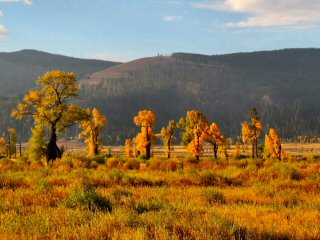
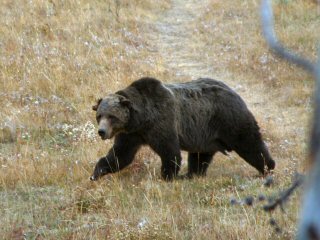
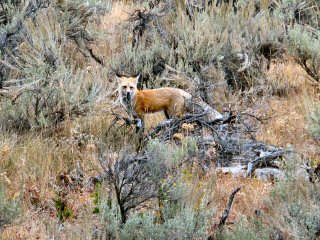
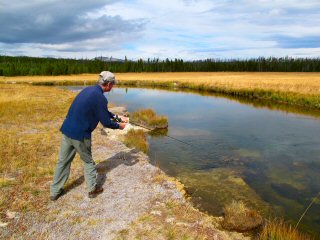
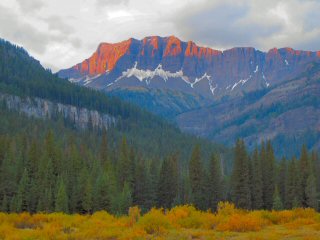
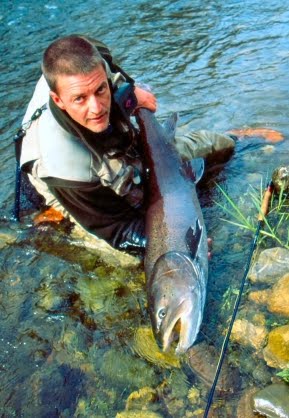
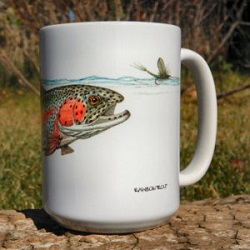







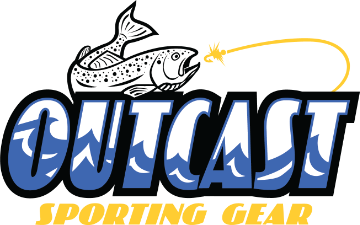

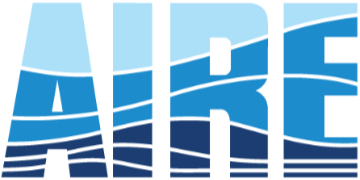

I have never been to Yellowstone this time of year. I will have to plan a trip. Good luck on your new movie